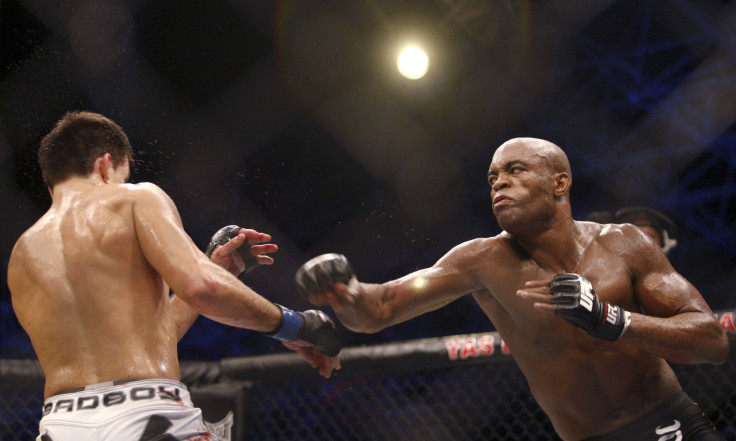Anderson Silva Steroids: How Many Other UFC Fighters Have Been Caught Juicing?

Anderson Silva’s legacy as the all-time greatest mixed martial artist and UFC champion took a significant blow Tuesday when it was revealed he tested positive for two anabolic steroids before his UFC 183 bout with Nick Diaz on Jan. 30.
But while the 39-year-old Silva’s place in history is under fire, the UFC and MMA as a whole have been mired by performance enhancing drug issues, both recent and more than a decade old.
According to ESPN, the Nevada State Athletic Commission found traces of the steroids drostanolone and androstane in Silva’s out-of-competition drug test given on Jan. 9. Diaz also tested positive for marijuana for the third time in his career.
Silva (34-6) denied he used steroids and Diaz (26-10) said he uses marijuana to treat attention deficit hyperactivity disorder in his home state of California, where medicinal use of the drug is legal. Silva’s five-round unanimous-decision win over Diaz marked the Brazilian's first fight since he suffered a severely broken leg against Chris Weidman in Dec. 2013.
During an interview with MMAJunkie.com in October, Silva had stated PEDs “are still a problem” in MMA and suggested any fighter who tested positive should face a severe suspension or outright barring from competition.
Silva has never tested positive for any performance-enhancing drugs during his 18-year MMA career, and UFC president Dana White backed up the fighter while defending the NSAC’s testing program in a statement.
“Anderson Silva has been one of the greatest athletes this sport has ever seen,” White’s statement began. “He has had a long and distinguished career in mixed martial arts. In his nine years with the UFC, Anderson has never tested positive for a banned substance. In light of this, we want to ensure that Anderson gets his due process and we will support him during this time.
“We fully support the Commission’s out-of-competition drug testing program, which we have financed when requested over the past two years. Testing of this nature is important to help keep the sport clean.”
White’s support of the testing program does speak volumes to his determination to keep UFC “clean,” and a new drug testing regiment will reportedly go into effect later this year through UFC, but performance enhancing drugs use has been a problem for the sport as far back as 2002.
MMAJunkie reported Tuesday that since the UFC increased out-of-competition testing for its fighters in Dec. 2013, 31 percent have tested positive for PEDs.
In a review of failed tests administered by the NSAC, the California State Athletic Commission, and UFC’s independent testing, CagePotato.com counted 45 failed drug tests over the last 12 years at several levels of MMA competitions. The worst year by far was 2007, when 14 fighters tested positive, more than doubling 2008 and 2014’s totals of five each.
Several of the fighters busted for PED use last year were all allegedly using drostanolone. There was middleweight Kevin Casey, who was eventually suspended for a full year in August. UFC rookie Brian Ortega’s positive test also came to light in August, and Poland’s Piotr Hallmann was caught a month after his UFC Fight Night 51 bout on Sept. 13.
And in June of last year, former Silva opponent and now retired Chael Sonnen tested positive for four banned substances, human growth hormone, recombinant human erythropoietin, anastrozole, and human chorionic gonadotropin, prior to his scheduled appearance at UFC 175 in July.
© Copyright IBTimes 2024. All rights reserved.




















